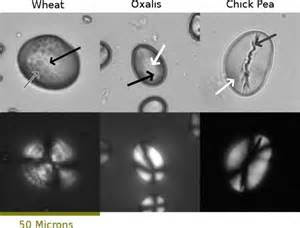the process and results of water separation at an
archaeological site
Much of what we know about Native
American plant husbandry is the result of many years of specialized
investigation through the archaeological recovery process of separating
carbonized debris from pit soil via water immersion. This process is called
flotation the principal method used by archaeologists and paleo-ethnobotanists
to recover plant parts, especially seeds and other small fragile remains from
archaeological contexts. Through flotation, specimens are recovered, identified
and studied to better understand the subsistence behaviors of the people who
consumed them. Additionally, starch and pollen grains and phytoliths are minute
residues associated with prehistoric diet. Thus, through a careful detailed
study of these plant related components, hidden information is revealed
relating to human diet. On a regional,
level this research has broad implications that have the potential to greatly
enhance our understanding of cultural adaptations and plant use/consumption of
prehistoric native groups who once occupied the Pennsylvania landscape.
various
starch grains from archaeological sites
At first blush growing crops from
weeds may seem a weird concept but cultures around the world have been doing
just that for thousands of years. Take for example the food patterns of early
Meso-American societies where various strains of grass, by way of eco-human
modification and natural selection developed into the primitive form of maize
called tseosinte. Over time this crop food, became the flint and dent varieties
of maize. Along with beans and other Mesoamerican derived plant foods likely spread
into the Mississippi Valley and on to other parts of North America at an early
period where they became valuable food products in the Native American and
Euro-American diet.
squash
phytoliths
Gourds were grown in the central
Mississippi valley around 4500 years ago and gourd rinds dating approximately
to this period have been recovered from archaeological contexts in the central
Susquehanna valley at the Memorial Park Site. Certain weed seeds carefully
selected for their robustness and nutritional qualities were replanted setting
the stages for incipient Eastern North American horticulture. Though
archaeologically unknown or rarely identified for much of Pennsylvania other
weed crops were Amaranthus a.k.a.
pigweed ,Chenopodium a.k.a.
goosefoot, Iva a.k.a. marshelder and Helianthus a.k.a. sun flower among
others.
multiple
pollen grains imaged under SEM scope
Horticulture or garden farming
played a significant role in the sustainment of a dependable food base. Climate
fluctuations occurring at certain periods in human prehistory/history, caused
by uncontrollable rises and declines in solar activity, volcanic eruptions and
trade wind temperatures, bore directly on ocean current patterns. Some or all
of these factors were contributory to the Little Ice Age and the Neo-boreal
climatic period between 1350-1850 AD. Their lasting effects were felt in many
parts of the world until the early 19th century when conditions again
improved.
Until the arrival of domesticates with
modifications in the environment human plant food consumption likely did not
change much though some plant foods were only available seasonally. Foods such
as berries and a wide range of nuts only ripened during certain times of the
year (i.e. the fruiting season of summer and the nutting season of late autumn).
In their absence edible parts of soft stemmed plants that emerged in early
spring were processed and eaten along with roots and tubers from mud banks and
wetlands. The latter of which were accessible over much of the year. Some of
these plant products thus harvested were eaten directly or stored for later
consumption added variety to the daily menu of native people.
The appearance of maize (circa 800
AD) and beans (circa 1300 AD) on Pennsylvania’s prehistoric landscape significantly
contributed to changes in Native American demographic patterns. Small
habitation sites grew into large fortified settlements supporting many people.
Surrounding many of these settlements were extensive agricultural fields where
corn, beans and pumpkins were grown. For much of Pennsylvania this subsistence strategy
lasted until the system collapsed and many groups were dispersed in the mid-17th
century when foreign diseases arrived and Europeans focused their economic
pursuits on land acquisition and the extraction of native resources. By the
early 17th century elements of the native diet were adopted by
European immigrants and their presence can still be seen on the modern day
dinner plate.
This has been a brief introduction on the use
of plant foods in the Keystone State from “weed seeds to garden seeds”. The 2015
Annual Workshops in Archaeology Program is only a week away. This year’s theme
is a topic of wide interest to many Pennsylvanians beyond the archaeo-botanical
community. Experts with special fields of interest will be presenting and you
can view the program by clicking on the program banner to the right at the top of this post. We hope
to see you at the workshops on November 14th.




No comments:
Post a Comment